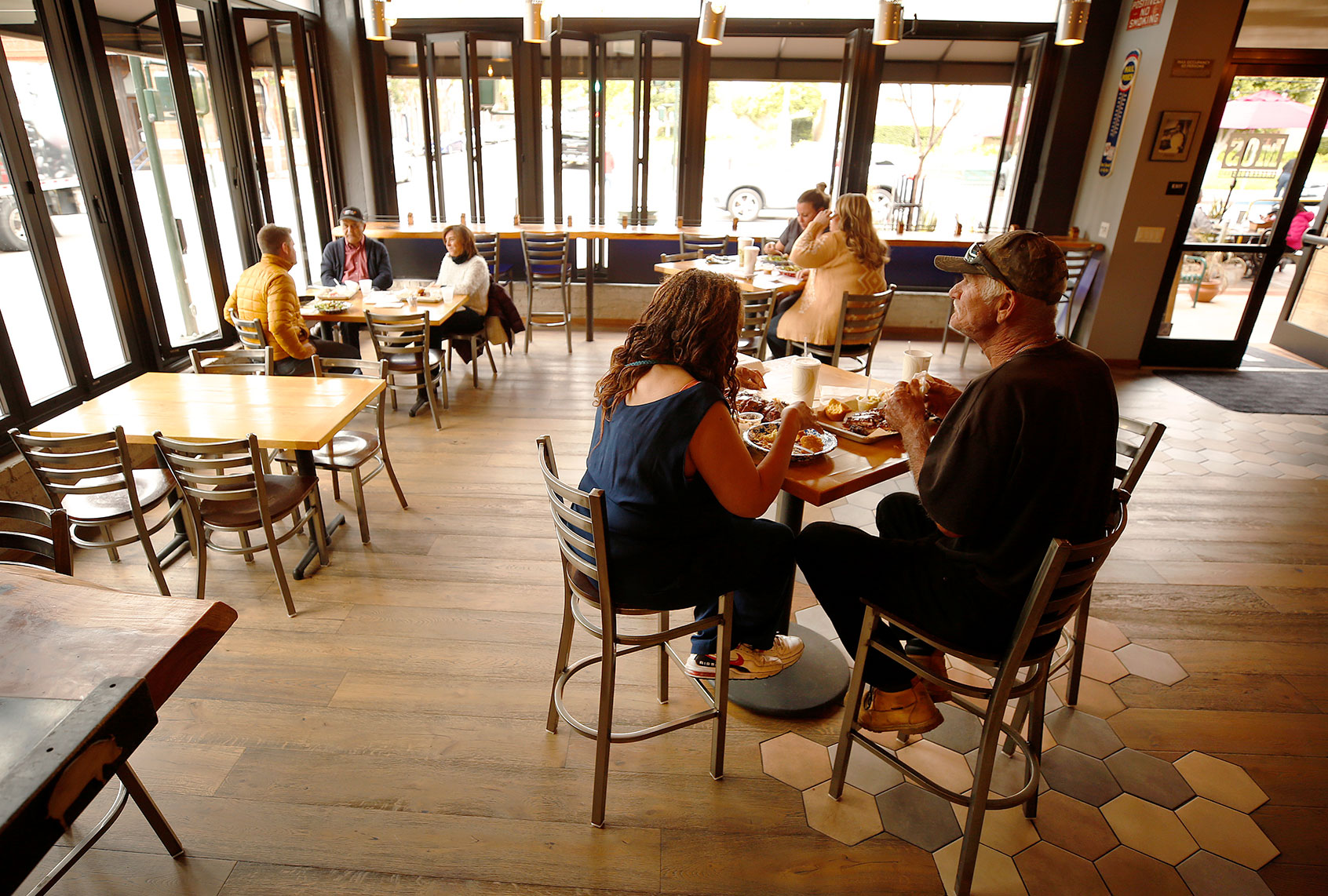Masked servers and cooks, socially distanced tables, and rules about removing one’s mask only to eat still aren’t enough to curb the spread of the novel coronavirus during indoor dining.
That’s according to a new study published by the Centers for Disease Control and Prevention (CDC), which adds to mounting research that there is a connection between dining out and increased COVID-19 outbreaks.
Researchers examined county-level data from March 1 to December 31, which found that daily infections and death rates decreased 20 days after mask mandates. They also found that six to 11 weeks after counties reopening their restaurants for on-premise dining, a rise in infections and deaths followed.
“Mask mandates were associated with statistically significant decreases in county-level daily COVID-19 case and death growth rates within 20 days of implementation,” the researchers state in the study. “Allowing on-premises restaurant dining was associated with increases in county-level case and death growth rates within 41–80 days after reopening.”
Notably, the CDC has some theories as to why there was delayed increase in COVID-19 cases six to 11 weeks after the point at which counties and states allowed restaurants to reopen. First, they speculate that restaurant-goers may have behaved “more cautiously” during the first weeks of dining re-opening, and then became less cautious as time passed. Alternatively, it may be that restaurants waited a few weeks to formally re-open after counties lifted their orders prohibiting restaurant dining. (COVID-19 symptoms generally surface two weeks after infection, which is why a six to 11 week delayed increase in infections is peculiar.)
One caveat to the study is that the data the CDC collected “did not differentiate between indoor and outdoor dining, adequacy of ventilation, and adherence to physical distancing and occupancy requirements,” according to the report. In other words, we are seeing an overall statistical sampling of what happens when jurisdictions open up dining, both indoor and outdoor. Ominously, that implies that outdoor dining could be unsafe, too.
“Further analyses are necessary to evaluate the delayed increase in case and death growth rates,” the CDC report states.
A separate CDC study published in September 2020 found that people with confirmed COVID-19 cases were twice as likely to have dined at a restaurant in the last 14 days before getting sick than those who tested negative for the coronavirus. The study received a critical response from the National Restaurant Association. “It is irresponsible to pin the spread of COVID-19 on a single industry,” the trade group said in a statement. “Restaurants have historically operated with highly regulated safety protocols based on the FDA’s Food Code and have taken additional steps to meet the safe operating guidelines required by CDC, FDA, OSHA, federal, state, and local officials.”
The CDC’s latest study arrives at a time when more states and cities are letting restaurants open their doors without limitations— and when restaurants and bars are on life support after being shut down, on and off, for nearly a year. The National Restaurant Association estimated that industry sales fell by $240 billion in 2020.
There have been dozens of articles asking the question: “Is indoor dining safe?” Most, if not all, suggest it’s not by accumulating research and advice from medical experts—unless it’s done carefully. Measures like social distancing in a well-ventilated space, and having patrons wear masks unless they’re eating and drinking, are often advised and reported to lower the activity’s risk. The CDC explains on its website: “The more an individual interacts with others, and the longer that interaction, the higher the risk of COVID-19 spread.”
“Masks may reduce the risk of COVID-19 spread when they are consistently used by customers and employees, especially when social distancing measures are difficult to maintain,” the CDC states. “The risk of COVID-19 spread increases in a restaurant or bar setting as interactions within 6 feet of others increase, as described below.”
Yet in the new CDC study, the federal agency concludes that prohibiting on-site dining could slow the spread of COVID-19 in the case of future outbreaks with new variants.
“With the emergence of more transmissible COVID-19 variants, community mitigation measures are increasingly important as part of a larger strategy to decrease exposure to and reduce transmission of SARS-CoV-2,” the study states. “Community mitigation policies, such as state-issued mask mandates and prohibition of on-premises restaurant dining, have the potential to slow the spread of COVID-19, especially if implemented with other public health strategies.”
Want more science stories in your inbox? Subscribe to Salon’s weekly newsletter The Vulgar Scientist.

